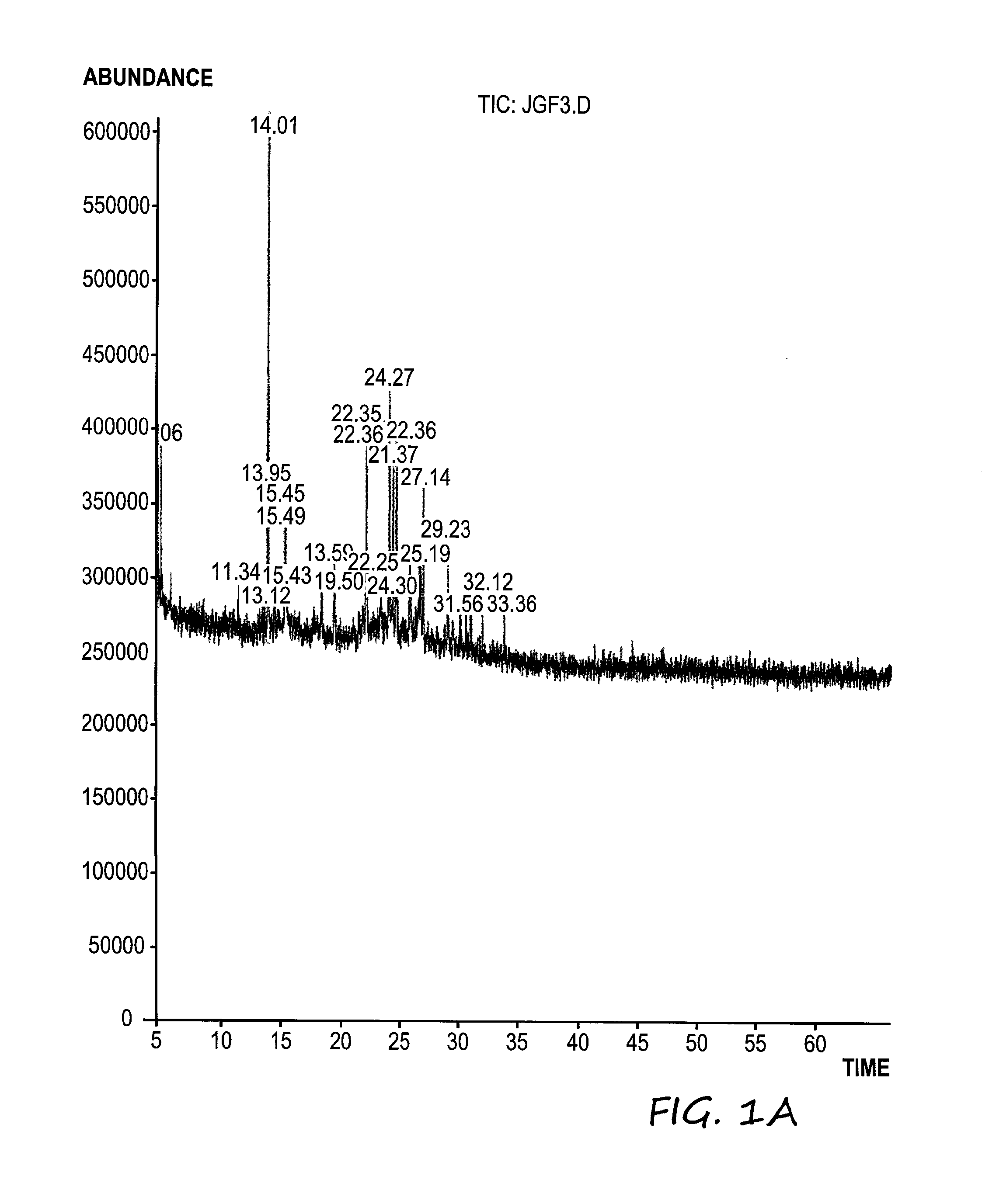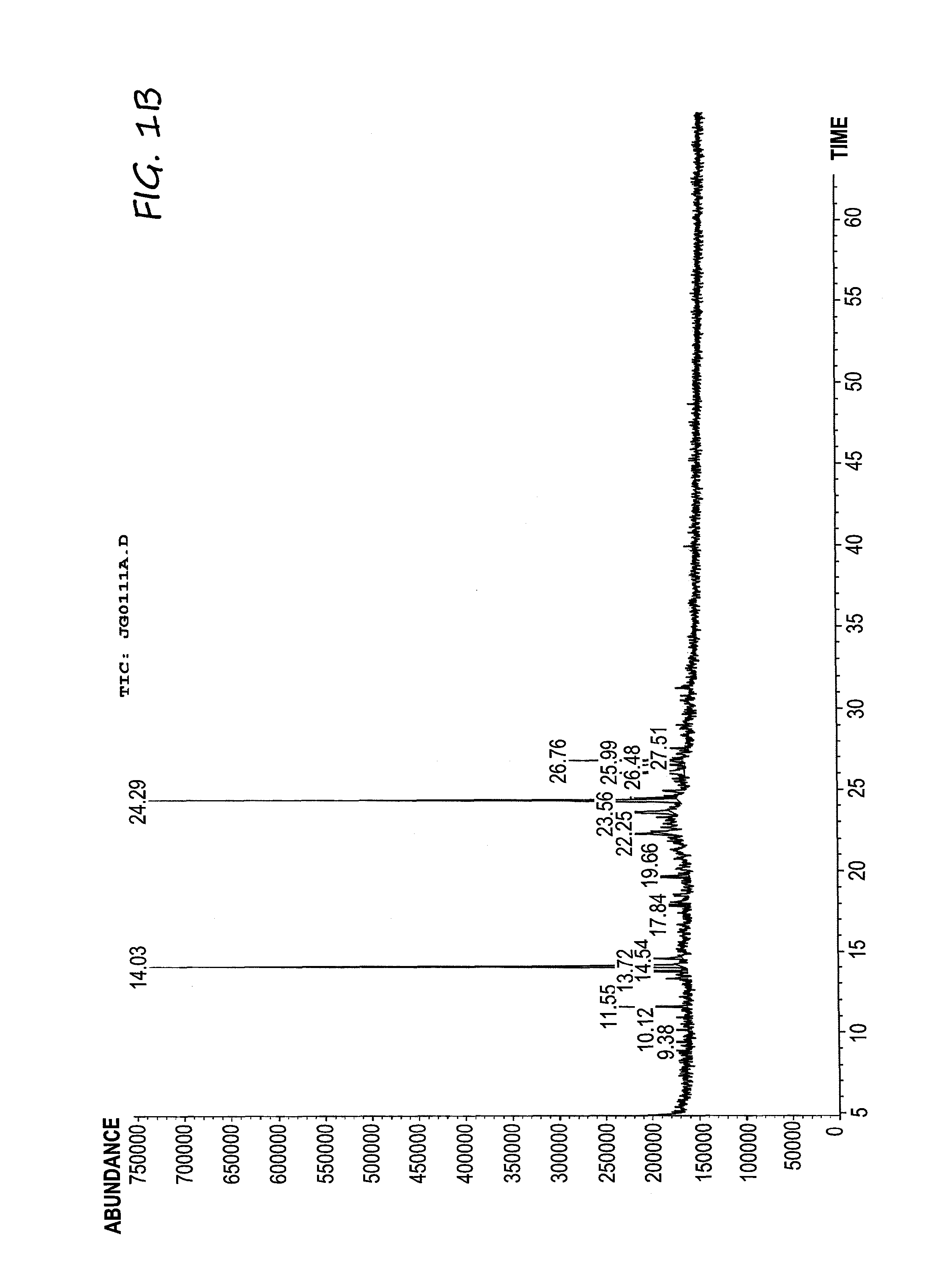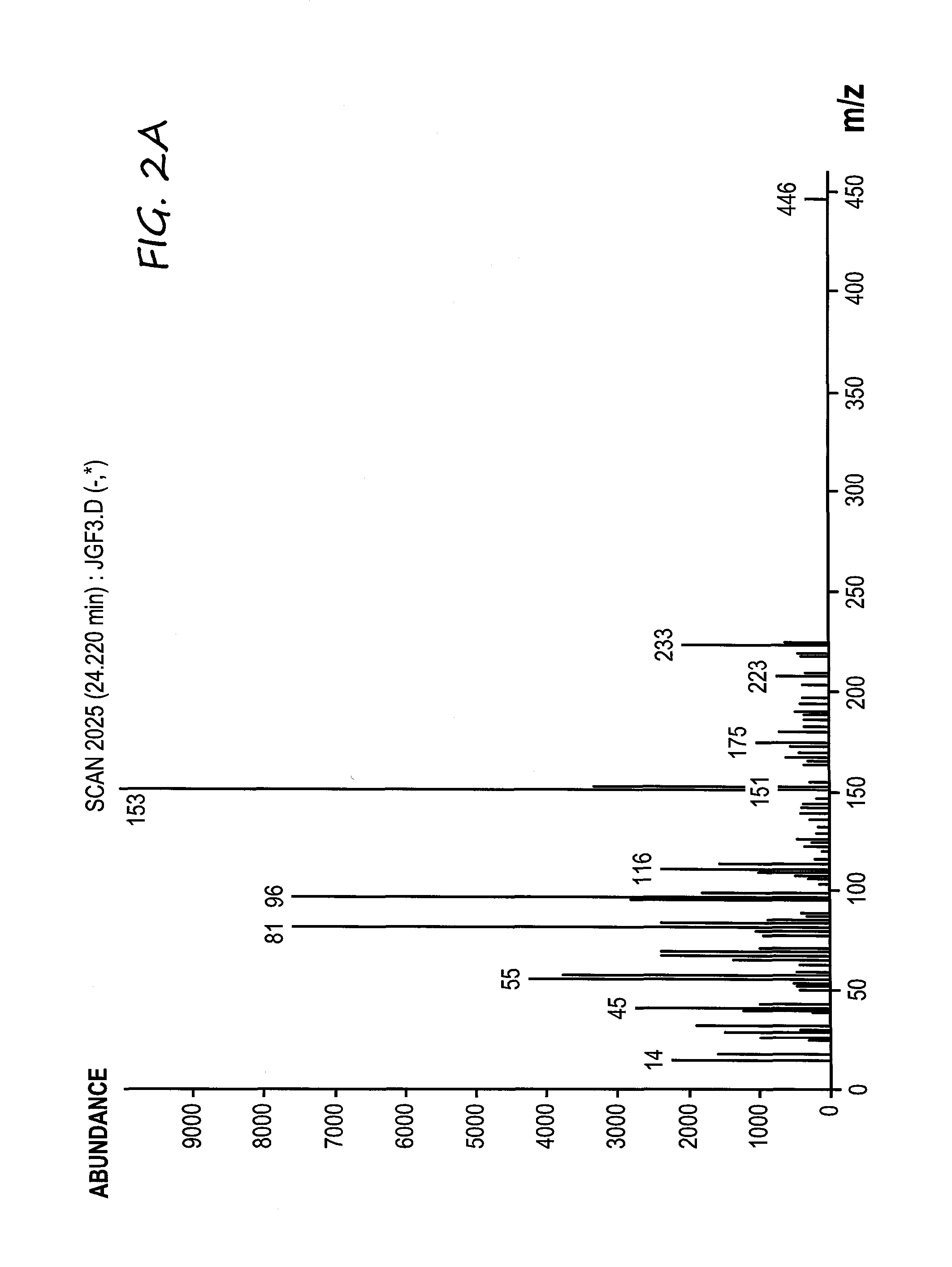Pest repellents from plant extracts
a technology of plant extracts and pest repellents, applied in the direction of biocide, plant ingredients, plant growth regulators, etc., can solve the problems of synthetic pesticides, many problems, poisonous, carcinogenic, etc., and achieve the effect of decreasing the rate of acquisition of resistance to pesticides
- Summary
- Abstract
- Description
- Claims
- Application Information
AI Technical Summary
Benefits of technology
Problems solved by technology
Method used
Image
Examples
example 1
[0109]Two 3 cm×3 cm squares of red cabbage were placed in a Petri dish. One of the pieces of cabbage was treated with a diluted solution of the extract prepared as described above, and the other with a 5% (w / v) solution of ethanol in water. In three separate experiments, solutions of extract diluted to 5%, 2.5%, and 0.3% (w / v), respectively, were tested. Each experiment was performed three times. Fifteen adult female thrips were placed in each Petri dish. The leaves were observed three days after the commencement of the experiment. Orange or white areas in the cabbage indicate consumption by the thrips.
[0110]Cabbage leaves treated with a 5% aqueous solution of the extract were completely free of any sign of consumption by the thrips, while all of the control leaves showed signs of having been attacked by the thrips.
[0111]In a second experiment, red cabbage leaves were treated with Neem tree extract, which has been reported to have pesticidal and pest repellent activity, and all of t...
example 2
[0112]Approximately 20 chive plants were placed in planters in a greenhouse. The plants were covered with a 40-mesh anti-insect net. Reference is now made to FIG. 3, which presents a photograph of the experimental setup. Half of the planters were coated with 60 ml / m2 of the pest-repellent composition disclosed herein comprising 1.25% by weight of Achillea extract, and the other half were coated with an ethanol-water mixture as a control. After approximately two weeks, the plants were checked for the number of thrips. After two weeks, the plants treated according to the invention herein disclosed averaged 5 thrips per plant infestation, while the control plants averaged 60 thrips per plant. Thus, the material and method of the present invention led to a >90% reduction in the amount of thrip infestation relative to the control sample.
example 3
[0113]An industrial-scale experiment was performed in cooperation with Bio-Bee (Sde Eliahu, Israel) in a greenhouse in which organic peppers were being raised. The greenhouse walls, made of net of 850 m length, were sprayed with a composition containing Achillea extract (1% w / v, 60 ml / m2) according to the methods disclosed herein fortnightly for six weeks. As a control, the walls of a second greenhouse, made of similar netting, were left untreated. Reference is now made to FIG. 4A, which presents a photograph illustrating the experimental setup. In the control and the experimental greenhouses, the plants were treated by application of a Western flower thrip predator according to technology developed by Bio-Bee or by application of a commercially available spinosad-containing pesticide (Tracer® manufactured by Dow Chemicals). Reference is now made to FIGS. 4B and 4C, which present graphs of the experimental results (percentage of the plants infested by thrips as a function of time). ...
PUM
 Login to View More
Login to View More Abstract
Description
Claims
Application Information
 Login to View More
Login to View More - R&D
- Intellectual Property
- Life Sciences
- Materials
- Tech Scout
- Unparalleled Data Quality
- Higher Quality Content
- 60% Fewer Hallucinations
Browse by: Latest US Patents, China's latest patents, Technical Efficacy Thesaurus, Application Domain, Technology Topic, Popular Technical Reports.
© 2025 PatSnap. All rights reserved.Legal|Privacy policy|Modern Slavery Act Transparency Statement|Sitemap|About US| Contact US: help@patsnap.com



